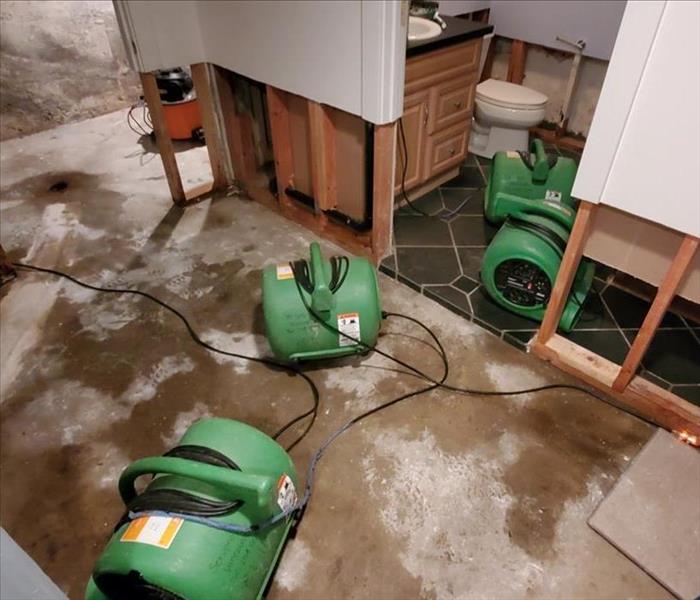Classifying Types of Water Damage
8/12/2021 (Permalink)
Water damages are a frustrating and time-consuming problem. When you take into account the risks associated with contaminated water and the possibility of secondary water damage, the entire situation can be very overwhelming. It's important that you identify the type of water you're dealing with before you decide to handle any repairs on your own. Sewer backups, for example, contain black water and should only be addressed by a professional.
1. Clean Water
Category 1 water is safe to handle. During a flooding situation, clean water may come from a leaky faucet or a break somewhere in the supply line. Unfortunately, if the situation isn't resolved, clean water can become contaminated and turn into category 2 or 3 water. Work quickly to thoroughly clean up and dry out your home when it is affected by clean water.
2. Gray Water
This contaminated water may cause trouble, but isn't as hazardous as black water, unless left untreated. It may carry viruses, bacteria, or urine, but it doesn't contain any feces. Overflowing toilets, dishwashers, and washing machines are some sources of gray water. Depending on what's in the water, it may be safe for you to handle this type of flooding on your own. If you aren't sure, contact a water damage specialist.
3. Black Water
The most serious of the three categories of contaminated water is black water. This type of contamination often contains untreated sewage, bacteria and viruses, chemicals, and microbial growth. Any contact with this type of water could lead to severe, lasting damages. Any water entering your home from the sewer system or from outside your home should be treated as black water.
Water damage is assessed to ensure the well-being of your family and home. Work closely with professionals who have the right training and equipment to deal with a flooding situation. You'll have lasting peace of mind, knowing that flooding has been dealt with appropriately.






 24/7 Emergency Service
24/7 Emergency Service
